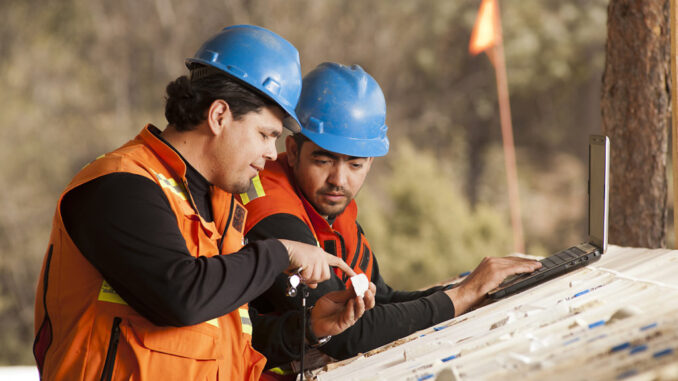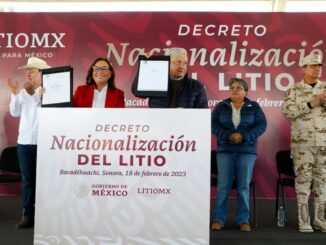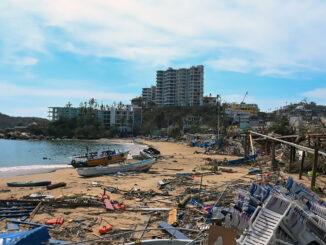
As miners struggle to find skilled labour, few companies are open about hiring workers outside Canada to meet their needs.
Few that is, except for Agnico Eagle Mines (TSX: AEM; NYSE: AEM), which has hired a dozen heavy duty mechanics from Mexico to work at its Macassa mine in Kirkland Lake, northern Ontario.
“Being able to attract 12 skilled mechanics is a great win for us,” Nathan Cloet, human resources director for Agnico’s Ontario region told The Northern Miner. “In this market environment it’s hard to find skilled mechanics. The mining industry across Canada and Ontario does not necessarily leverage immigration as much as they could or should. So for us, we want to try this out.”
The workers are part of a new program Agnico is piloting that seeks to fill positions with employees from sister operations, in this case its La India mine in Mexico’s northern state of Sonora, which closed last year after it reached its end of life. The program is putting the workers and their families on a permanent residency-track and Cloet expects they’ll start working at Macassa by March or April.
Agnico’s program comes as Canada’s mining labour force is expected to face even more shortages in the next decade, mainly due to workers retiring, but also from waning interest in mining among young people, according to the Ottawa-based Mining Industry Human Resources Council (MiHR).
The council’s 2023 Canadian Mining Outlook report forecasts the industry’s total workforce will — in a baseline scenario — decrease by 5% to 170,796 in 2033. That’s due to decreasing commodity prices in line with World Bank projections and higher interest rates. Even to meet that reduced level, 158,220 jobs will have to be filled over the 2023-2033 period across the mining and milling, support services and primary metal manufacturing sub-sectors.
Meanwhile, only 137,934 people are projected to enter the industry, leaving an employment gap of 20,287 across all sub-sectors.
Labouring to meet needs
In Cloet’s view, competition for skilled mining labour is tight in northeastern Ontario, could worsen as older workers retire.
“We have continuous needs for hiring,” he said. “Even the 12 workers we hired don’t meet our needs for Macassa. It’s an ongoing concern we’re trying to address.”
He’s quick to note that Agnico first tried to find Canadian workers for the roles. When it couldn’t, it had to go through the labour market impact assessment (LMIA) process, which requires employers to show that no Canadian or permanent residents are available to fill the job.
Cloet acknowledged that employing foreign labourers might raise issues about skills transfer and tensions about hiring non-Canadian workers, but he also said that the 12 mechanics will be paid the same as a Canadian would be.
“There are risks,” he said. “But for us, it helps that these people already have worked for us. We believe this can be successful. In the framework of Canada immigration, I would advocate that it’s something to try.”
The MiHR has also noted in its 2023 Canadian Mining Workplace Profile that immigrants are a relatively untapped potential talent pool. In 2022, immigrants represented about 30% of the country’s overall workforce, but only 10% of mining and quarrying, the report stated.
“From this perspective, the mining industry has been losing ground to other industries over the last decade and a half,” it said.
Leave no stone unturned
Mining and mineral engineering masters student Raisul Islam Atik has yet to formally enter the workforce, but he has discovered many opportunities through education in his 13 months in Canada.
While downsizing at Laurentian University in 2021 saw many of its courses cut, including environmental geoscience, its still-intact mineral engineering program drew Atik from his native Bangladesh, where he was studying the life cycle of electric vehicle batteries.
At Laurentian, he didn’t want to “seclude” himself from Canadian society as he said some other international students have done, and discovered there are many open roads into the industry.
“I wanted to take a different route, and I wanted to actually learn and immerse myself in whatever learning opportunities that I could get about this mining industry,” he said.
He began volunteering with the Modern Mining & Technology Sudbury organization that promotes awareness about mining. That eventually led him to being selected for the Mineral Industry Leadership Certificate at Laurentian, a program of training modules and site visits that also came with a $3,000 scholarship.
For the mentorship part of the program, he was paired with Morne Beukes, head of Canadian operations with mining engineering firm BBE Group.
“He’s an amazing man from South Africa,” Atik said. “I’m constantly in touch with him when I want to know something. As an international student, it was impossible for me to get access to such an experienced professional on my own.”
Reviewing barriers to entry
Even though Atik has made his way to the doorstep of Canada’s mining industry, many others like him might lose out on that opportunity after the federal government in January cut back on the number of international student permits.
Peggy Bell, founder and principal consultant with Resource Becoming, a non-profit consultancy that aims to enhance equity, diversity and inclusion (EDI) in mining, says the industry’s labour woes should be viewed in that larger context.
“EDI is a philosophy, and we need to develop diversity within mining, but it’s also a function to develop talent pools,” she said. “If we don’t have that access or if we don’t have the same number of new Canadians coming to the country to study, we potentially are losing that talent pool.”
Bell explained that attracting foreign – or Canadian – talent to the industry can also be sped up if mining companies re-examine their barriers to entry, such as the distinctions between qualifications, skills and experience.
She cited the Professional Engineers Ontario (PEO), which was the first association to act on legislation passed last May by the Ontario government that banned regulated professions from requiring Canadian work experience.
“How are we creating barriers for new Canadians and new talent?” she asked. “Can (miners or operators) accept a foreign degree with a certain amount of job experience? Or are they willing to accept the foreign degree and train the new employee on the job?”



